Operation Polaris. Failed attempt by the Red Army to destroy Army Group North
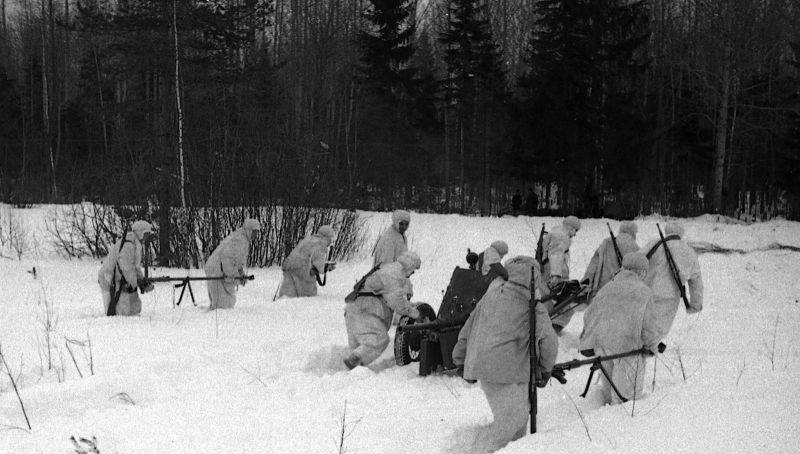
Soviet armor-piercers with anti-tank rifles and a 45-mm 53-K cannon change position in the Demyansk area.
February 1943 of
Plan of operation
After the Stalingrad victory and the capture of the strategic initiative, the Soviet Headquarters decided to launch a strategic offensive from the Caucasus Mountains to Lake Ladoga. The troops of the Leningrad, Volkhov and North-Western fronts were to build on the success of Operation Iskra (breaking through the blockade of Leningrad) and conduct Operation Polar Star with the aim of encircling and completely defeating the German Army Group North, liberating the Leningrad Region and creating the prerequisites for a successful offensive in the Baltics.
The main blow was to be delivered by the troops of the left wing of the North-Western Front (NWF) under the leadership of Marshal Timoshenko. At the first stage, it was planned to block and destroy the enemy’s Demyansk group with concentric strikes. At the same time, the troops of the Leningrad and Volkhov fronts were supposed to liquidate the Mginsky ledge. At the second stage, after the breakthrough of the German defense south of Lake Ilmen, the specially created Special Group of Forces of General Khozin was to deliver a powerful blow in the north-west direction, reach the Dno - Porkhov - Luga area, liberate Pskov and intercept the communications of Army Group North of Field Marshal von Küchler.
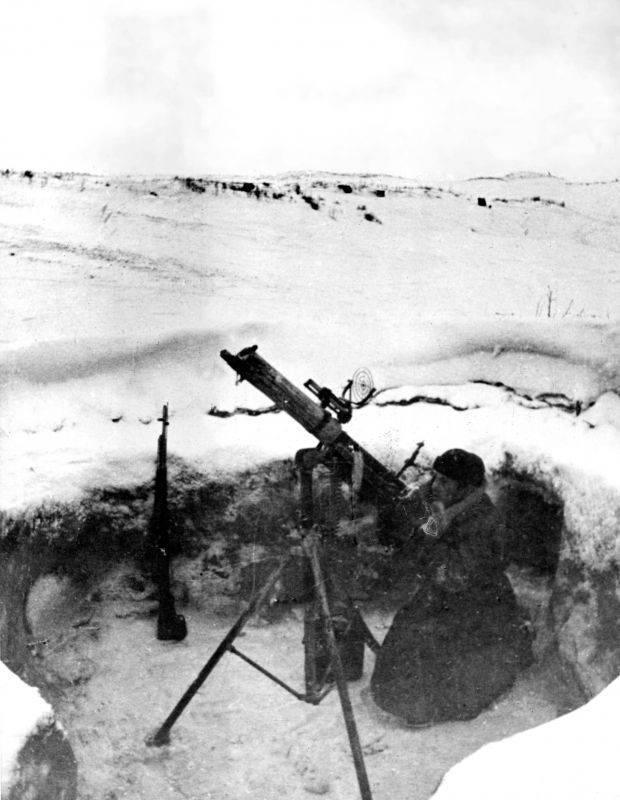
Red Army soldier with a machine gun "Maxim", mounted on an anti-aircraft machine, near Leningrad
The troops of the right wing of the NWF, after capturing Staraya Russa, were to liberate Novgorod in cooperation with the 52nd Army of the Volkhov Front (VF). Special group (1st tank army, 68th army and reserve) at that time was to quickly occupy the Kingisepp-Narva region, cutting off the enemy's escape route to Estonia. It was planned to carry out a series of landings to capture key railway junctions and settlements, so 68 Guards Airborne Divisions were included in the 5th Army.
Also, the Special Group did not allow the enemy to transfer reinforcements to the Demyansk and Leningrad-Volkhov groups. Then it remained to destroy the encircled Wehrmacht groups, creating favorable opportunities for the liberation of the Baltic states.
Marshal of the Armored Forces M. E. Katukov, who then commanded the 1st Tank Army, in his memoirs gave the following assessment of the Polar Star plan:
The operation was planned to begin on February 8, 1943. The coordination of the troops of the three fronts was to be carried out by the representative of the Headquarters, Marshal Zhukov, and the actions of artillery and aviation - Chief Marshal of Artillery Voronov and Marshal of Aviation Novikov.
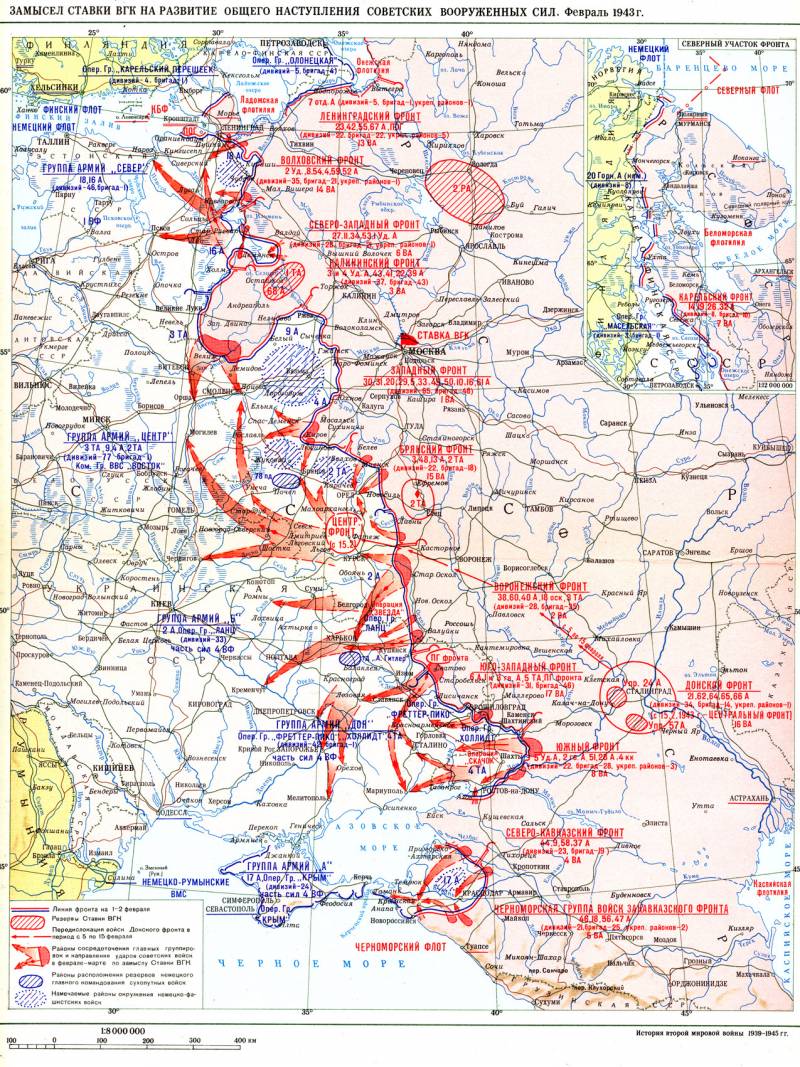
Shortcomings
The plan was seriously flawed. The Russian offensive in the northwest was not sudden. Here our troops advanced all the time and without long pauses. German air reconnaissance easily revealed the regroupings and concentration of our troops, since the road network was underdeveloped. On the other hand, our intelligence knew very little about the enemy's defenses, even about the front line.
It was necessary to advance rapidly in the face of strong enemy defenses, not against Germany's weak allies - Italians, Romanians or Hungarians, but against first-class German divisions. In most areas, the Germans had a well-organized and prepared defense. The Nazis improved the defense for a year and a half. The operation was carried out in the conditions of a wooded and swampy area, an approaching mudslide and a weak road network. In essence, it was necessary to advance in the forest wilds covered with snow, swamps, where there were almost no roads. And in the mudslide, the existing ones also disappeared.
The underestimation of the enemy, poor intelligence and, accordingly, lack of planning also affected. The supply lines were not really organized. Therefore, Marshal Voronov recalled:
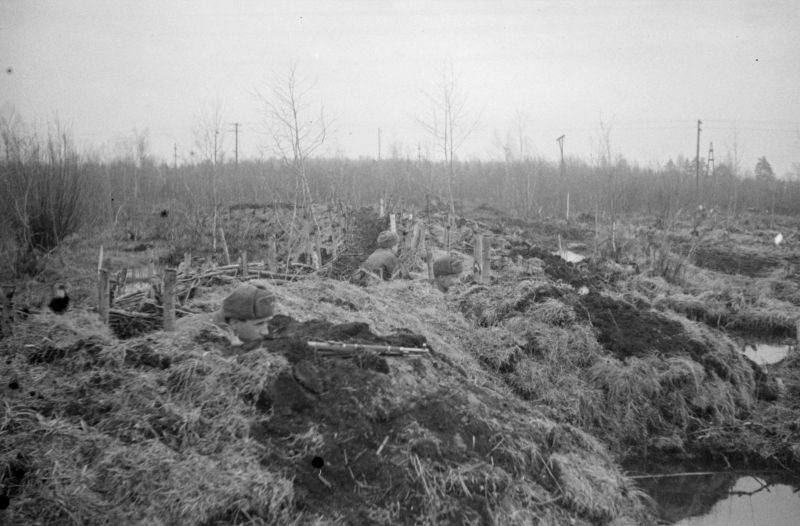
Soldiers of the Red Army in the trenches built in the swamp, southwest of Voybokalo station. March 1943
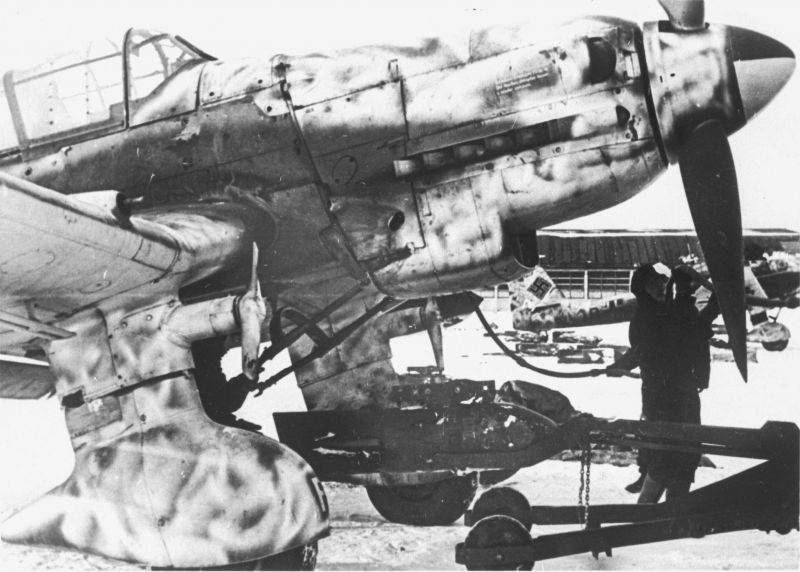
Preparing a German Yu-87 dive bomber for takeoff at an airfield near Leningrad
Krasny Bor
On February 10, 1943, the operation of the LF and VF began to encircle and destroy the Mginsk-Sinyavin group of the 18th German army. Flank attacks were carried out by strike groups of the 55th Army of the LF and the 54th Army of the VF. They attacked in the general direction of Tosno. The strike force of the 55th army of Sviridov included 3 guards rifle divisions, a ski brigade, a guards tank regiment of breakthrough (24 tanks). The rest of the army remained in the second echelon: 5 rifle divisions, 3 rifle and ski brigades, 2 tank brigades, a breakthrough tank regiment, 2 armored vehicle battalions (over 190 tanks, self-propelled guns and armored vehicles). The 54th Army of the VF included 10 rifle divisions, 3 rifle brigades, 3 tank regiments, as well as artillery and engineering units (more than 70 thousand people in total). The 2nd shock and 67th armies were to deliver auxiliary strikes.
After an hour-long artillery preparation, in which up to 1 guns and mortars took part, the shock forces of the 55th Army launched an offensive from the Kolpino area to Mga and Ulyanovsk. By the end of the day, our troops took Krasny Bor. In two days the army advanced 5 km. General Lyubimtsev's mobile group (tank and ski brigades) tried to develop the first success. But parts of the 250th Spanish "Blue" division did not allow our troops to break through further. The Spaniards, despite heavy losses, managed to gain a foothold south of Krasny Bor and along the banks of the Izhora River and, putting up stubborn resistance, held out until reinforcements arrived. Soon the battle groups of the 212th and 215th German divisions approached, which strengthened the defense and stopped the Soviet offensive in this direction.
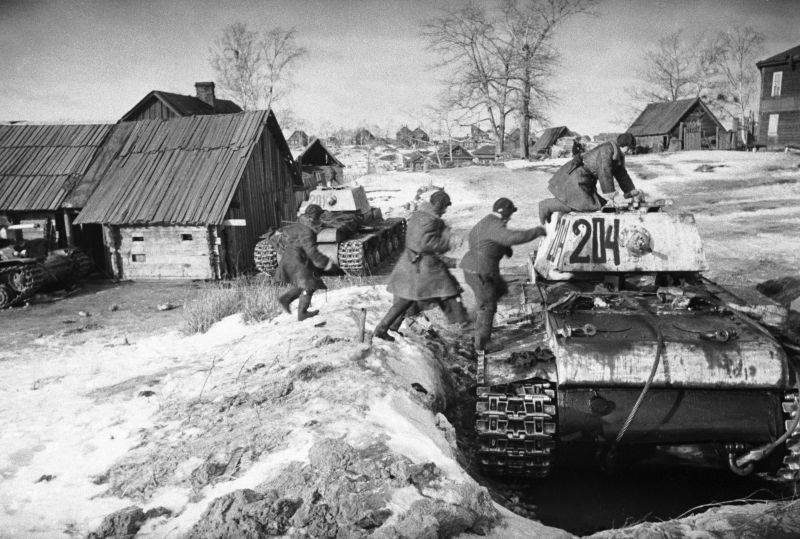
The crew of the Soviet KV-1 tank is preparing for battle in the Sinyavino area
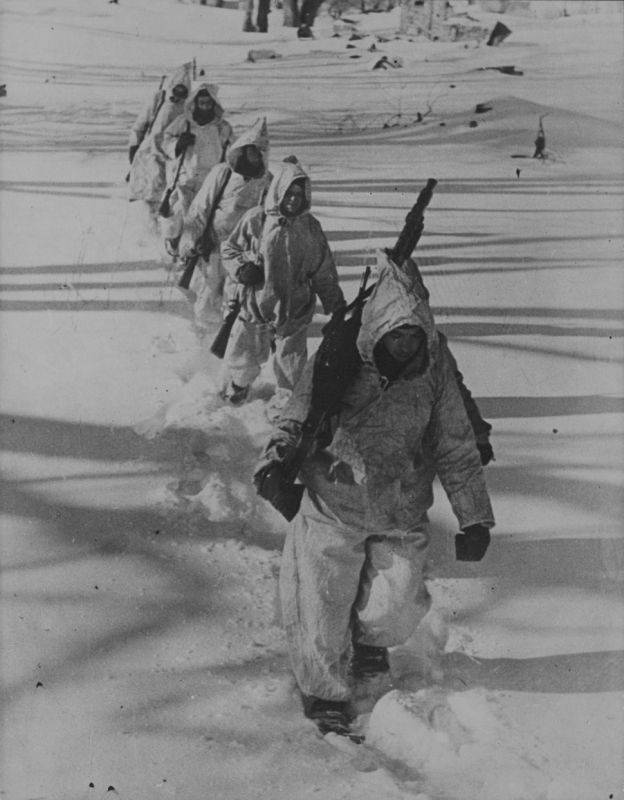
A group of soldiers of the 250th Infantry "Blue" division of the Wehrmacht in the forest near the village of Krasny Bor, Tosnensky district, Leningrad region. January-February 1943
In the Mginsky direction, the 4th SS Police Division retreated 4 km to the Tosna River. The 56th Marine Brigade crossed the Neva on the ice in the Ivanovsky area and captured a bridgehead, but this success could not be developed. The Marines fought for several days, and almost all died.
In the meantime, the German command reinforced the direction of the troops of 4 infantry divisions, parts of the SS. The offensive of the 55th Army fizzled out and was stopped on February 27th.
As a result, the troops of the 55th Army advanced only 4-5 km on a front section 14-15 kilometers wide.
The 54th Army of the VF had even more modest results - the advance was 3–4 km. Sukhomlin's army was advancing north of the Tigoda River on a 9-kilometer section of the front Makaryevskaya Hermitage - Smerdynia - Korodynia. Despite strong artillery and air preparation, the army troops made almost no progress on the first day. On the second day of the operation, the 198th and 311th divisions, supported by the 124th tank brigade, broke through the first line of defense between Makaryevskaya Hermitage and Smerdynia, and were able to approach the enemy's main line. There the offensive bogged down again.
On February 14, a mobile group was formed from the reserve 58th Rifle Brigade and the 7th Guards Tank Brigade. By February 16, the mobile group had penetrated the enemy defenses, but the Germans cut off our advanced units with flank counterattacks. At this, the offensive of the 54th Army was stopped. On the night of February 20-21, the remnants of the group broke through to their own. On February 23, the army went on the defensive.
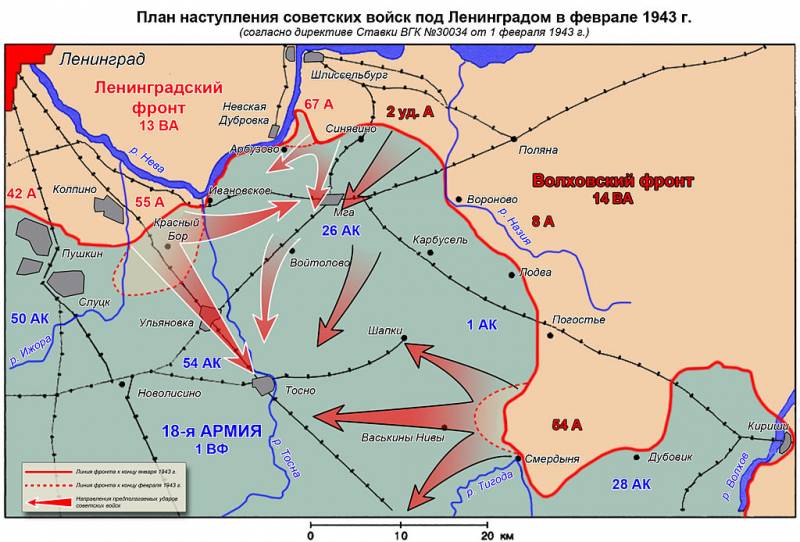
Demyansk operation
Meanwhile, in the Demyansk area, the troops of the NWF went on the offensive. The front (1st shock, 27th, 11th, 34th and 53rd armies) consisted of 28 rifle and airborne divisions, 17 rifle and 3 tank brigades, in total more than 320 thousand people. Timoshenko's front was given the task of cutting off the so-called. the Ramushevsky corridor, to defeat the troops of the German 16th Army of E. Bush (15 divisions), who defended the Demyansk bridgehead, and in the future to advance on Pskov, Narva. Directly in the Demyansk bag there were 12 divisions, about 100 thousand soldiers. The defense in the Demyansk area was led by the commander of the 2nd Corps, General P. Lauks.
The Demyansk ledge was formed back in 1941, when this important position on the Valdai Upland was occupied by the 2nd Army Corps of the German 16th Army. In February 1942, the NWF troops were able to surround six enemy divisions in the Demyansk area. However, it was not possible to eliminate the Nazis in the boiler.
The Germans created a powerful defense, the Luftwaffe organized an air bridge. In April, the German task force "Seidlitz" managed to restore land communications with the encircled group, breaking through the so-called "Ramushevsky corridor" 6-8 km wide in the Soviet defense.
The Red Army repeatedly tried to cut the corridor in the spring, summer and autumn of 1942, but the operations were not successful. The last unsuccessful operation was carried out in December 1942 - January 1943.
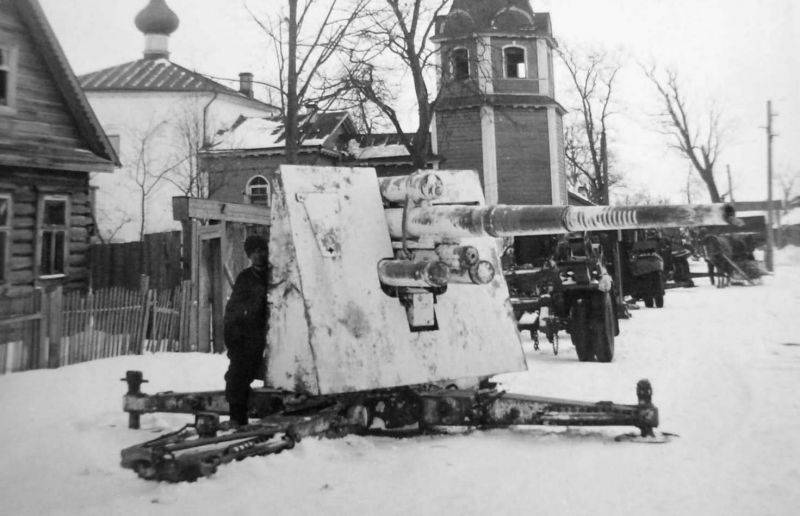
German 88 mm FlaK 18 anti-aircraft gun in Demyansk
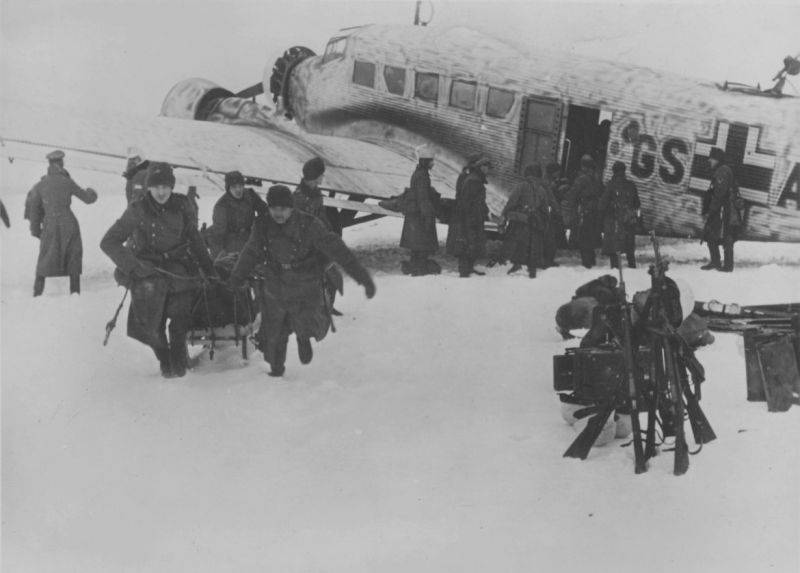
German soldiers in the Demyansk cauldron are unloading the Yu-52 transport plane, which delivered weapon and ammunition
A new operation was being prepared in February 1943. Trofimenko's 27th Army struck from the north, Korotkov's 1st Shock Army from the south in order to intercept the Ramushevsky corridor with converging strikes, and then, in cooperation with the 11th, 34th and 53rd armies, destroy the encircled Demyansk group. To the south of Zaluchya was located the 100-strong Special Group of Khozin, which they planned to bring into battle in the zone of the 1st shock army in order to develop an offensive on Soltsy and further on to Luga. The group included the 68th army of Tolbukhin - 6 rifle and airborne divisions, 4 rifle and ski brigade; Katukov's 1st Panzer Army - 6th Panzer and 3rd Mechanized Corps, a separate tank brigade and 4 regiments (over 600 tanks).
The preparation of the next Russian offensive did not become an unpleasant surprise for the German command. Realizing that it would be very difficult to hold the bridgehead, the commander-in-chief of the army group Kühler in mid-January 1943 proposed to the headquarters to withdraw the army to the Staraya Russa-Kholm line. The Fuhrer refused to withdraw the troops, but at the end of the month he gave his consent. The 16th Army began preparations for evacuation in mid-January, laying a narrow-gauge railway through the Ramushevsky corridor, leading a system of log gates from it to the front line. The evacuation of rear depots and heavy weapons began. At the same time, in order to deceive the Russians, the Germans demonstrated the preparation of an offensive from the Demyansk region.
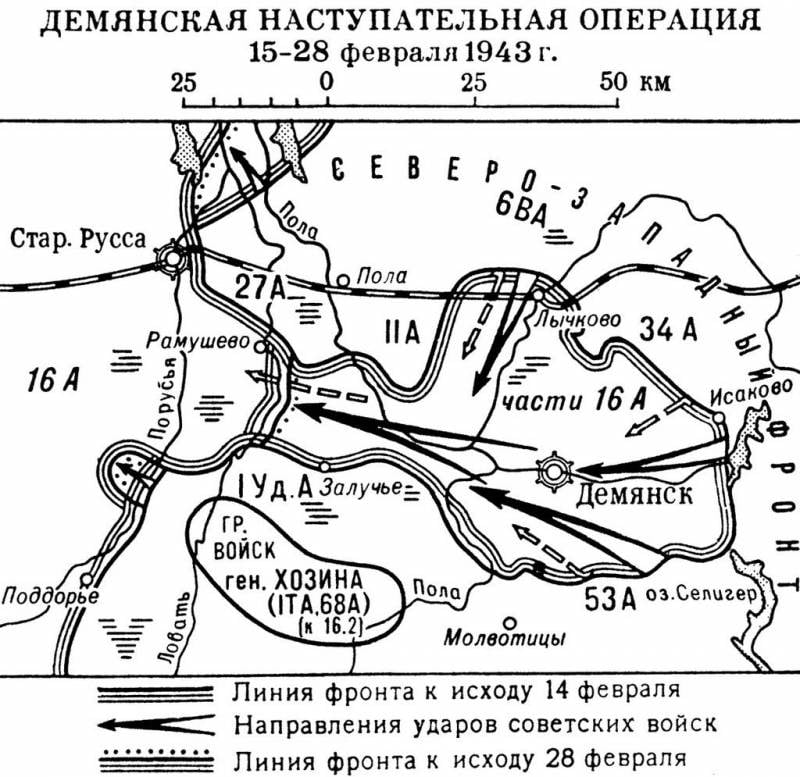
Successful withdrawal of the 16th Army
The Germans had already begun the evacuation of the 16th Army, and our troops were not ready for the offensive. The 1st Panzer Army was only being formed on the basis of the command and control of the 26th Combined Arms Army, having the nearest supply base 250 km away and a deadline set for February 17th. The formation and supply of the Katukov army took place in extremely difficult weather conditions (snowfalls, snowstorms alternated with frosts), in a wooded and swampy area, where there were very few even dirt roads.
The 68th Army was created only at the beginning of February on the basis of the control of the 57th Army, which arrived from near Stalingrad. Half of the army was made up of landing formations, which were used as ordinary infantry. As a result, by the beginning of the operation, the Special Group had not completed its concentration, formation and training.
Therefore, on February 15, 1943, the 11th and 53rd armies of Kurochkin and Zhuravlev launched an offensive first to intercept the corridor, and Lopatin's 34th army advanced northeast of Demyansk. The rest of the armies by this time were not ready for the operation. This was the signal for the start of a complete evacuation of the German divisions. On the night of February 17, the troops of the 2nd Corps, occupying the defenses in the eastern and northern parts of the bridgehead, began an organized withdrawal to one of the five intermediate positions. The released parts strengthened the "walls" of the corridor. The divisions retreating to the west were covered by rearguards.
On February 19, our command discovered that the enemy was leaving. The 34th Army began to occupy the liberated territories. On February 20, the Soviet Headquarters recommended Zhukov to launch the offensive of the 27th, 1st shock armies and the Special Group 3-4 days earlier than the date set, in connection with the withdrawal of the enemy. On February 23, the 27th Army launched an offensive south of Staraya Russa, on February 26, the 1st Shock Army began to move.
At this time, the Germans had already left the Demyansk bag. They left Demyansk on February 22. Despite fierce attacks and heavy losses, the Soviet troops were unable to break through the defenses of the corridor. On February 28, the offensive was stopped. The German 16th Army successfully carried out the evacuation, its divisions strengthened the defenses in the northwest.
A special group was never thrown into battle. The thaw has begun. The tank army at the starting line was in a swamp, in the words of Katukov, "to the very tower." Plans for the liberation of Pskov and Narva had to be postponed. The 1st Panzer Army was loaded into echelons and sent to the central strategic direction. Khozin's group was disbanded on March 9.
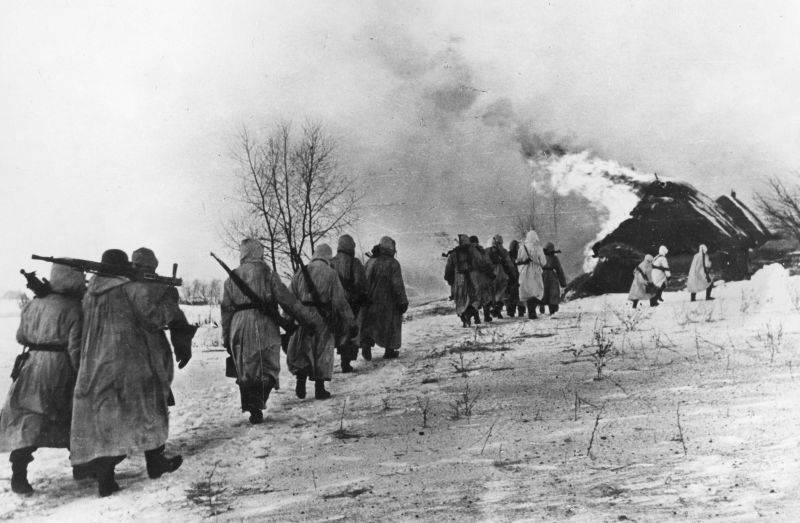
German soldiers approach the burning rural buildings on the Demyansk bridgehead
To be continued ...
Information